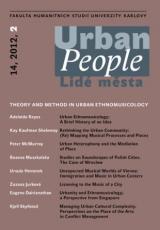Urban Ethnomusicology
A Brief History of an Idea
DOI:
https://doi.org/10.14712/12128112.3510Klíčová slova:
urban ethnomusicology, multidisciplinarity, purposive redundanceAbstrakt
The nature of urban ethnomusicology and its relations with its parent discipline have been nebulous almost from the start. Some four decades ago, when urban ethnomusicology first entered the ethnomusicological scene, the term was taken to signal an expansion of ethnomusicology's research field beyond self-contained societies into the urban area. It has now become clear that that expansion required a re-thinking of prevailing practices and theoretical orientations. To better define the issues at stake, this paper traces the development of urban ethnomusicology not as praxis but as idea. The essentially multidisciplinary nature of urban ethnomusicology is examined in the context of its relations with anthropology and sociology in particular. Problems and benefits derived from urban ethnomusicology's multidisciplinary heritage are identified for the purpose of putting ethnomusicology into the best possible position to meet the challenges posed by a world that is rapidly and inexorably becoming urbanized.
Stahování
Publikováno
Jak citovat
Číslo
Sekce
Licence

Tato práce je licencována pod Mezinárodní licencí Creative Commons Attribution-NonCommercial-NoDerivatives 4.0.


